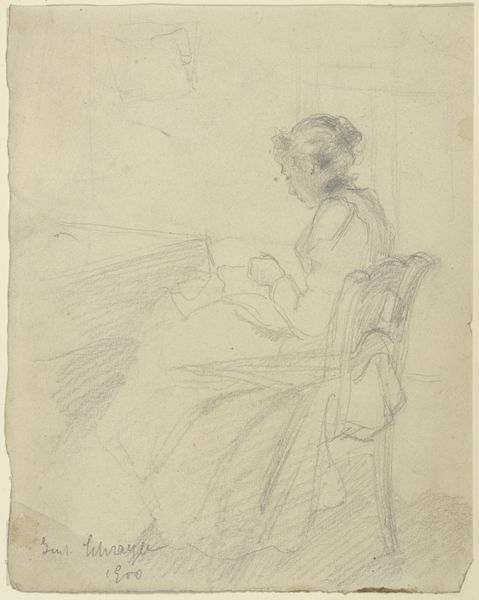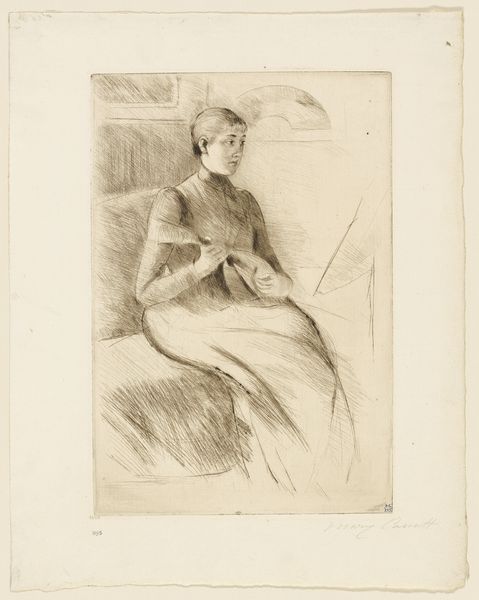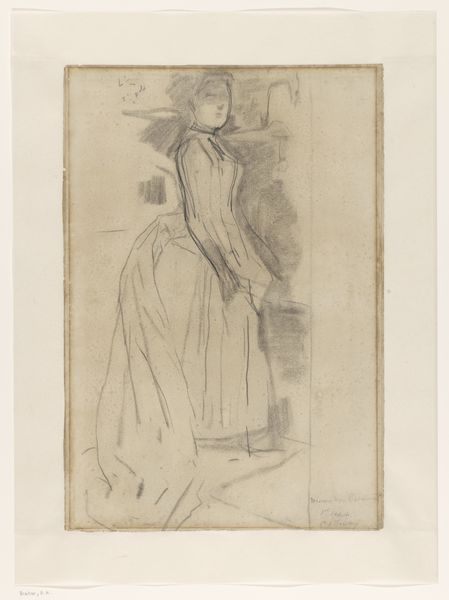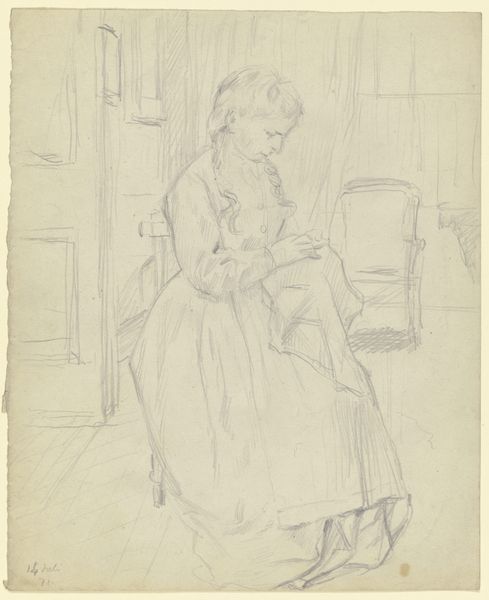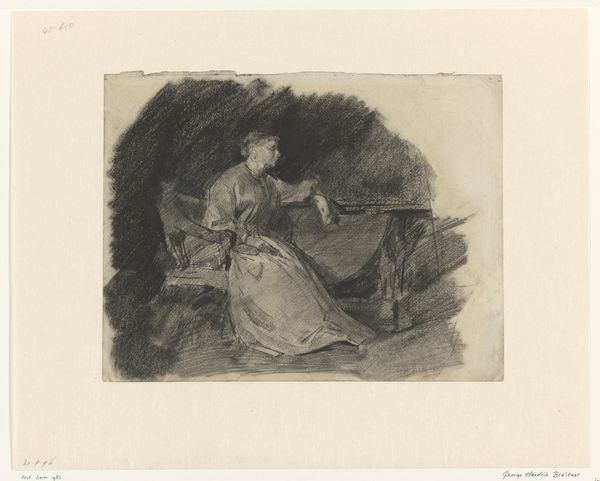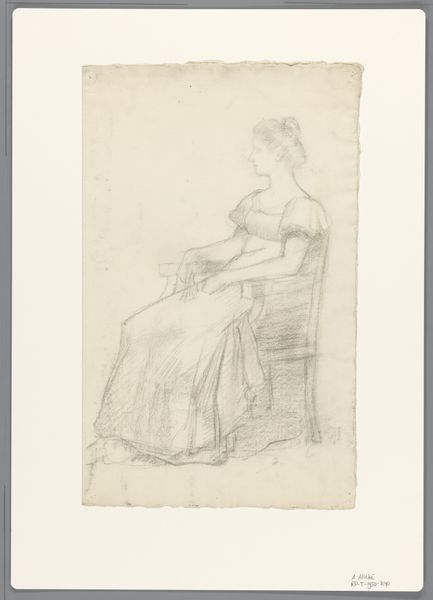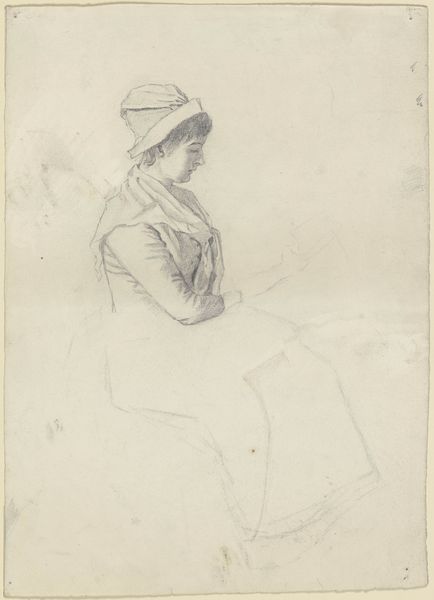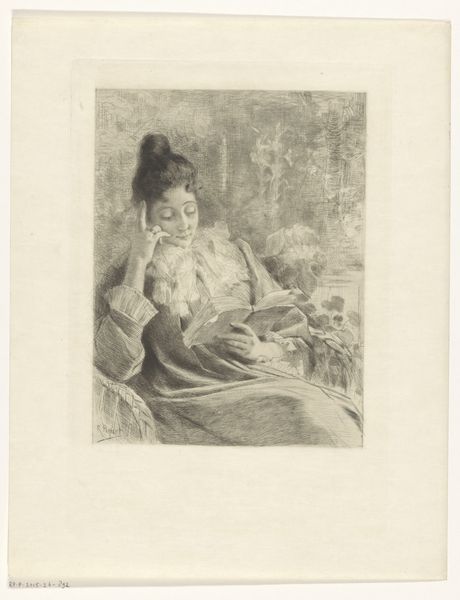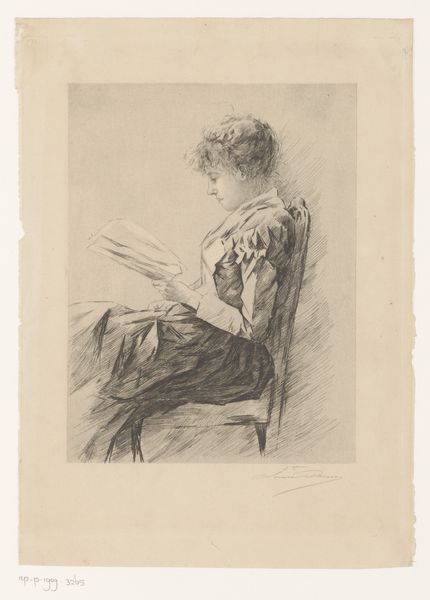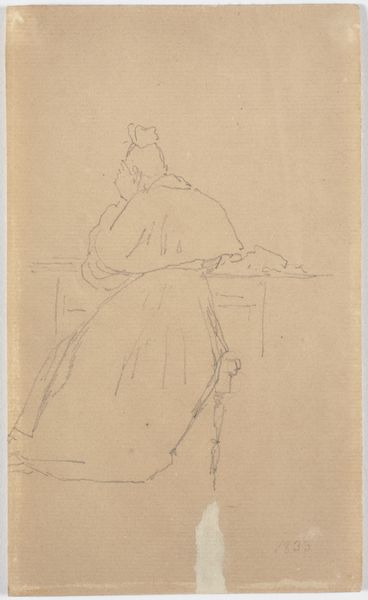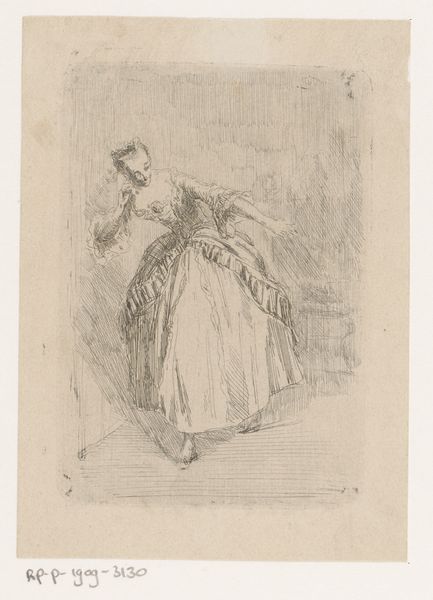
drawing, pencil
#
pencil drawn
#
drawing
#
amateur sketch
#
light pencil work
#
pencil sketch
#
personal sketchbook
#
idea generation sketch
#
pen-ink sketch
#
pencil
#
sketchbook drawing
#
pencil work
#
genre-painting
#
sketchbook art
#
realism
Dimensions: height 346 mm, width 250 mm
Copyright: Rijks Museum: Open Domain
Editor: We're looking at "Zittende handwerkende vrouw" – or, "Seated woman doing needlework" – a pencil drawing made sometime between 1871 and 1906 by Pieter de Josselin de Jong. The subject is a woman seated, focused on her sewing, but the composition feels very immediate and personal, almost like a quick sketch. What formal elements strike you when you look at this drawing? Curator: Note the artist’s decisive use of line. The figure is formed through economical strokes, focusing on the contours to delineate her form. Observe how areas of dense hatching give way to the untouched paper. This juxtaposition of light and shadow creates a sense of depth, wouldn't you agree? Consider also the composition’s balance, or perhaps, imbalance? The woman is positioned asymmetrically within the frame, which leads our eye... where? Editor: I see what you mean. My eye is drawn down her dress and then out towards the corner! The areas of heavier pencil give real weight to the chair and her lower half, rooting her in the space despite the sketchiness. But it also feels unresolved. Is this tension intentional, or perhaps, incidental to the sketch? Curator: I find that question particularly compelling, as it hinges on how we read "intention." Can we locate intent, or only infer function from effect? The visual result is clear, that imbalance, as you aptly named it, draws the viewers eye to certain sections, allowing others to fade away, thus generating depth from something very flat. But what "caused" this imbalance? Perhaps that cannot be answered without additional documentation. Editor: That makes sense. Looking at the way the light and shadow are built, and where the details appear and disappear, the drawing asks you to consider both what’s there and what’s not. It's quite beautiful, even unfinished. Curator: Precisely. The unresolved nature pushes us toward understanding it not as a mere depiction, but as a construction. Through lines and their absence, the artist provokes consideration of visual mechanics themselves.
Comments
No comments
Be the first to comment and join the conversation on the ultimate creative platform.

